
Valerian
Valerian
(Valeriana officinalis)
Plant Family
Caprifoliaceae
Parts used
Radix
(but leaves and stems are also used in folk medicine).
Typical forms of prescription
Infusions (not decoctions),
Tinctures
Valerian (Valeriana officinalis) - Clinical Snapshot
Primary Actions
Sedative
Anxiolytic (reduces anxiety)
Hypnotic (promotes sleep)
Mild analgesic (pain-relieving)
Antispasmodic (relieves muscle spasms)
Astringent
Bitter (stimulates digestion)
Carminative (reduces gas and bloating)
Diaphoretic (promotes sweating)
Diuretic (promotes urination)
Hypotensive (lowers blood pressure)
Nervine (supports the nervous system)
Emmenagogue (stimulates menstrual flow)
Primary Indications
Used to support conditions such as:
Insomnia and disturbed sleep patterns
Anxiety, nervousness, and tension
Restlessness and hysteria
Migraine and stress-related headaches
Hypochondriasis and emotional instability
Irritable Bowel Syndrome (IBS)
Intestinal cramps and colitis
Dyspepsia (indigestion)
Hypertension (high blood pressure)
Paroxysmal (sudden, intense) coughs
Epilepsy (as a supportive remedy—see cautions)
⚠️Cautions / Safety⚠️
Avoid long-term use without professional guidance.
Use with caution alongside sedative medications or alcohol, as effects may be amplified.
Theoretical caution in cases of bipolar disorder and schizophrenia due to its nervous system effects.
As an emmenagogue, it should not be used during pregnancy.
Valeriana officinalis
Phytochemistry and Pharmacology
Valepotriates
Includes: Valtrate, isovaltrate, didrovaltrate
Action: Anxiolytic, sedative, spasmolytic
Use: Found primarily in the fresh root, valepotriates are unstable compounds thought to contribute to valerian’s central nervous system calming effects. They help reduce anxiety, stress, and muscle tension, though they degrade in dried preparations. Often used for short-term acute nervous tension and agitation.
Volatile Oils
Includes: Bornyl acetate, valerenal, valerenic acid
Action: Sedative, muscle relaxant, mild analgesic
Use: These are key to Valerian’s deep sedative action. Valerenic acid, in particular, enhances GABA (gamma-aminobutyric acid) activity, a primary inhibitory neurotransmitter, making Valerian helpful in insomnia, restlessness, and stress-related palpitations.
Sesquiterpenes
Includes: Valerenic acid derivatives
Action: CNS depressant, anti-anxiety, antispasmodic
Use: These support valerian’s action on the GABAergic system, leading to a calming, muscle-relaxing effect without being overtly narcotic. They are suitable for tension headaches, period pain, or stress-related IBS.
Iridoids
Includes: Didrovaltrate
Action: Nervine, antispasmodic
Use: These add to valerian’s action as a trophorestorative nervine, helping rebuild and calm the nervous system over time, especially in cases of burnout, chronic insomnia, or emotional fatigue.
Alkaloids (minor)
Includes: Actinidine
Action: Mildly stimulating or modulating
Use: Trace alkaloids may explain why valerian can paradoxically stimulate in some individuals, particularly those who are very depleted or sensitive.
Traditional Use
Historically regarded as a “cure-all,” valerian has been used across Europe for a wide range of ailments, including epilepsy, nervous disorders, and general unrest. The Romans valued it as a remedy for heart palpitations, trembling, and emotional disturbance, early signs of its sedative reputation. Its calming properties remained central to its use throughout the Middle Ages, where it was frequently prescribed for hysteria, anxiety, and sleeplessness, especially in women.
Clinical discussion
Valerian is one of the most reliable sedative nervines in Western herbal medicine. It is commonly used to ease insomnia, panic attacks, and anxiety-related tension without causing daytime drowsiness. Clinical studies suggest it can be as effective as some prescription sedatives for short-term sleep disturbances.
It also has mildly analgesic and antispasmodic actions, making it useful for conditions involving muscle tension or vascular spasm, such as IBS, dysmenorrhoea, back pain, and migraines. It combines particularly well with Cramp Bark (Viburnum opulus) for these issues.
Valerian has been studied in combination with St John’s Wort (Hypericum perforatum) for mild anxiety and depression, with results showing comparable efficacy to amitriptyline but with fewer side effects. It’s also used to help lower blood pressure, particularly in cases linked to stress or anxiety-induced palpitations.
In rare cases, valerian may have a paradoxical stimulating effect, typically in individuals with a naturally “hot” constitution.
Cultivation/harvesting
Valerian is a hardy perennial that thrives in rich, moist soil with full sun to partial shade. It prefers damp meadows, stream banks, or garden spots that retain some moisture through summer. Sow seeds in spring or autumn, pressing them into the soil surface (they need light to germinate), or propagate by root division in early spring.
Harvest the roots in autumn of the second year for medicinal use, once the foliage has died back. Wash thoroughly and dry at low temperatures (below 40 °C) to preserve its aromatic compounds. Expect a strong, earthy, and somewhat pungent scent. While leaves and flowers are occasionally used, the root is the primary source of valerian’s calming, sedative action.
Key Botanical Features of Valerian (Valeriana officinalis)
Growth
Valeriana officinalis is a tall, herbaceous perennial native to Europe and parts of Asia. It has a clumping, upright growth habit and can reach 1.2 to 1.5 metres (4–5 feet) in height. Stems are hollow, grooved, and slightly hairy from a short rhizome.
Roots
Thick, short rhizome with numerous long, fibrous roots.
Roots have a distinctive, strong musky aroma (often described as unpleasant), especially when dried.
The medicinal root is harvested after the second year of growth in autumn.
Leaves
Arrangement: Opposite or occasionally whorled along the stem.
Shape: Pinnate (feather-like), with 7–11 lanceolate leaflets per leaf.
Size: Basal leaves can be 15–20 cm long; upper leaves are smaller and more deeply divided.
Colour: Medium to dark green.
Surface: Slightly hairy; leaflets may have finely toothed edges.
Flowers
Type: Small and tubular, arranged in branched, flat-topped clusters (corymbs or cymes).
Inflorescence: Terminal clusters at the top of stems.
Colour: Pale pink to white, sometimes with a lilac hue.
Size: Each flower is about 4–5 mm across.
Scent: Sweet and vanilla-like, attractive to pollinators (especially moths).
Structure: Five fused petals, three stamens, and one style.
Fruit & Seeds
Type: Achene (small, dry, one-seeded fruit).
Shape: Narrow, ribbed, and topped with a feathery pappus (helps with wind dispersal).
Colour: Light brown when mature.
Adaptations
Prefers damp, rich soils and can often be found near riverbanks, meadows, and woodland edges.
Tolerates partial shade but grows best in full sun with adequate moisture.
Attracts pollinators such as bees and butterflies; flowers are also visited by moths at night.
Easily propagated by root division or seed.
Sustainability/conservation
Widely cultivated for medicinal use.
Not under threat in the wild, but overharvesting from wild populations should be avoided.
Organically cultivated valerian is readily available and preferred for sustainability and consistency in active constituents.
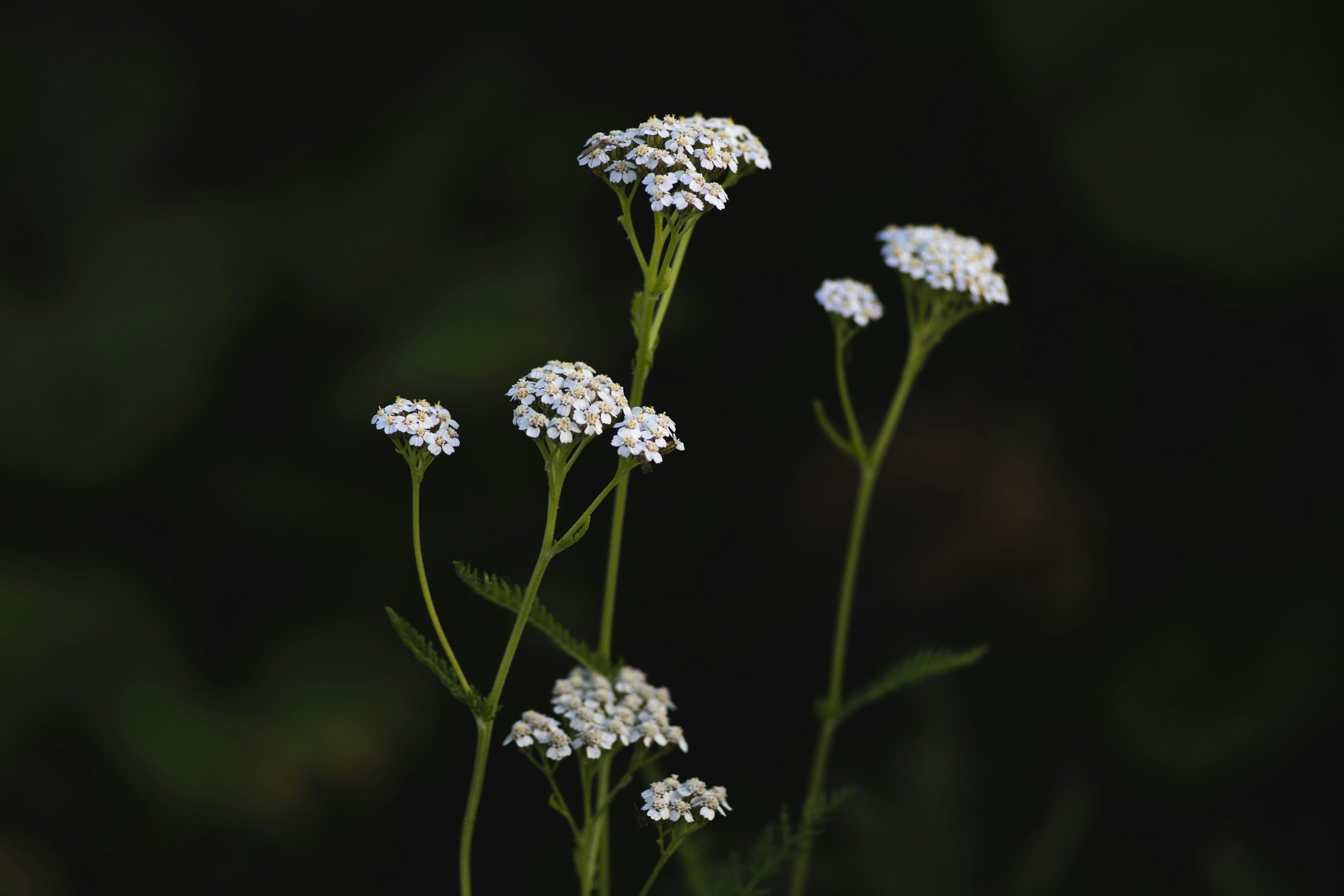
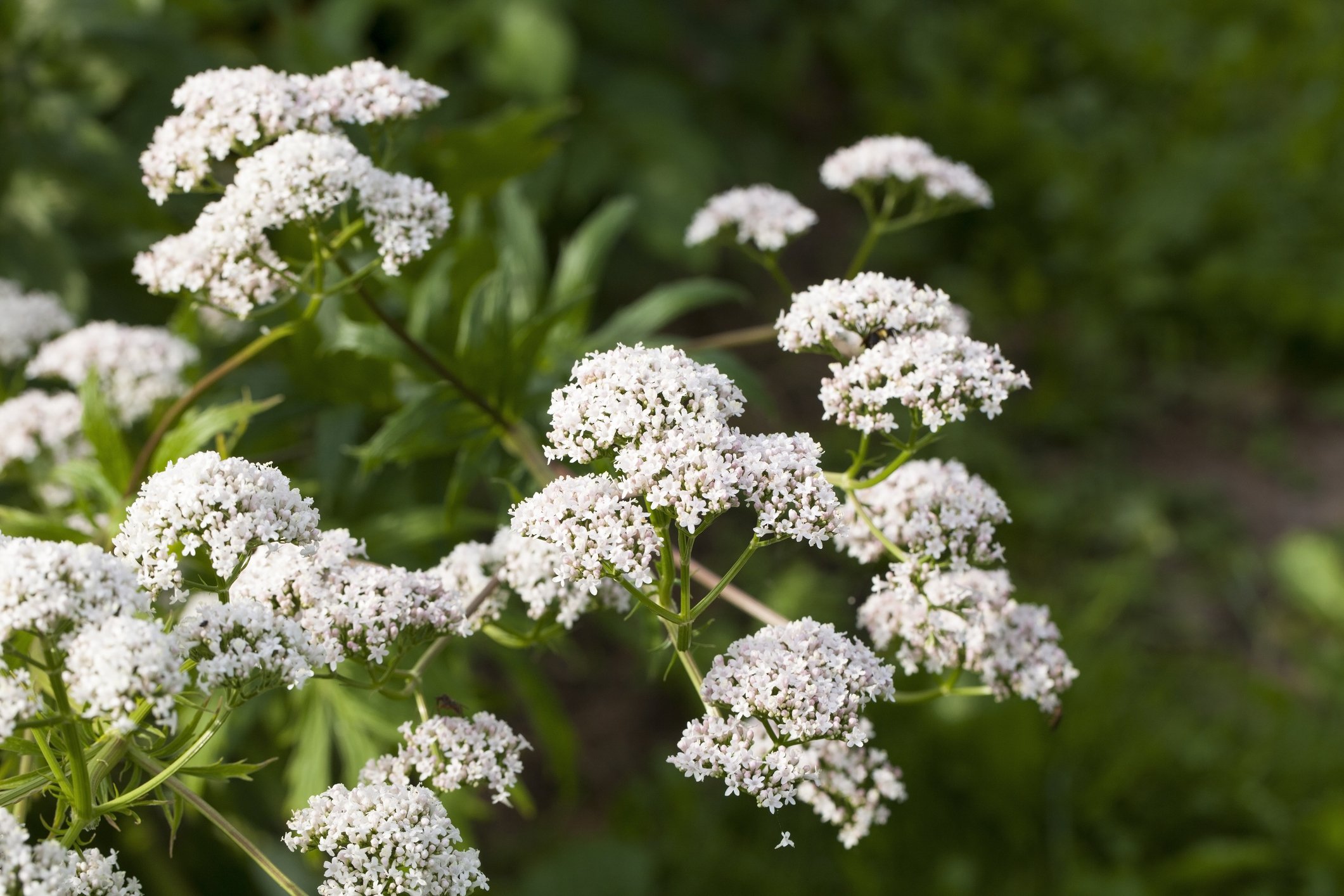
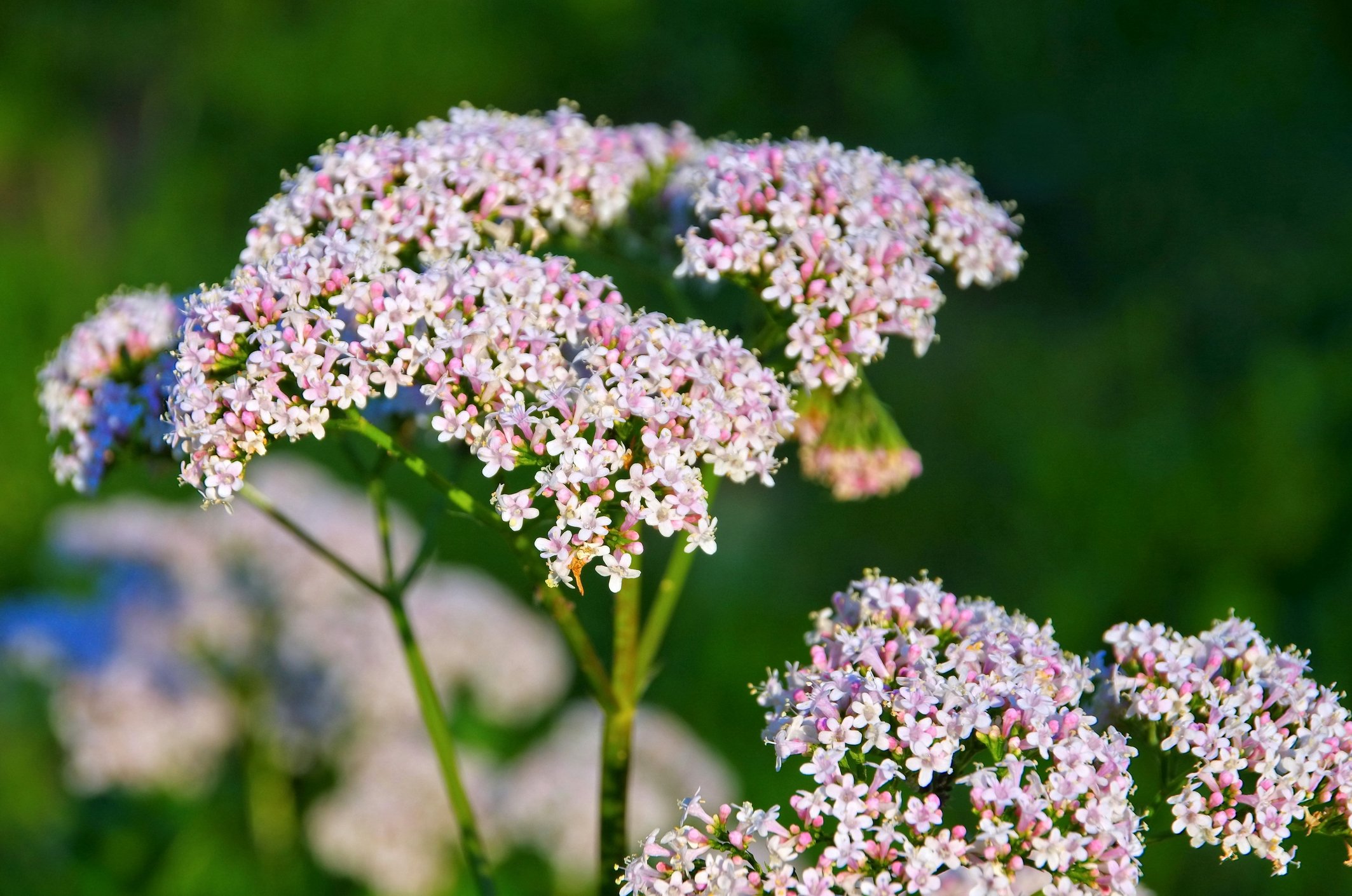
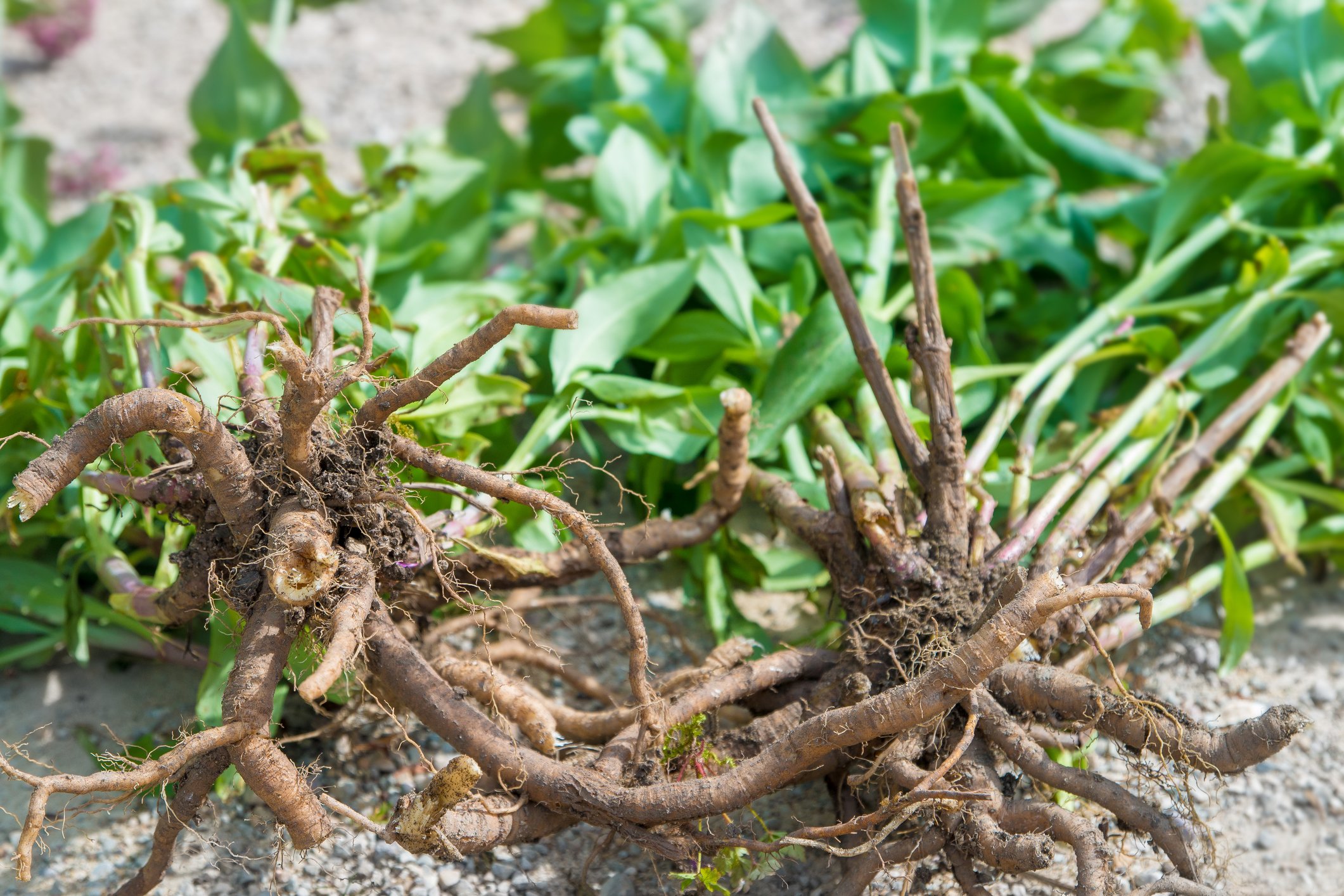
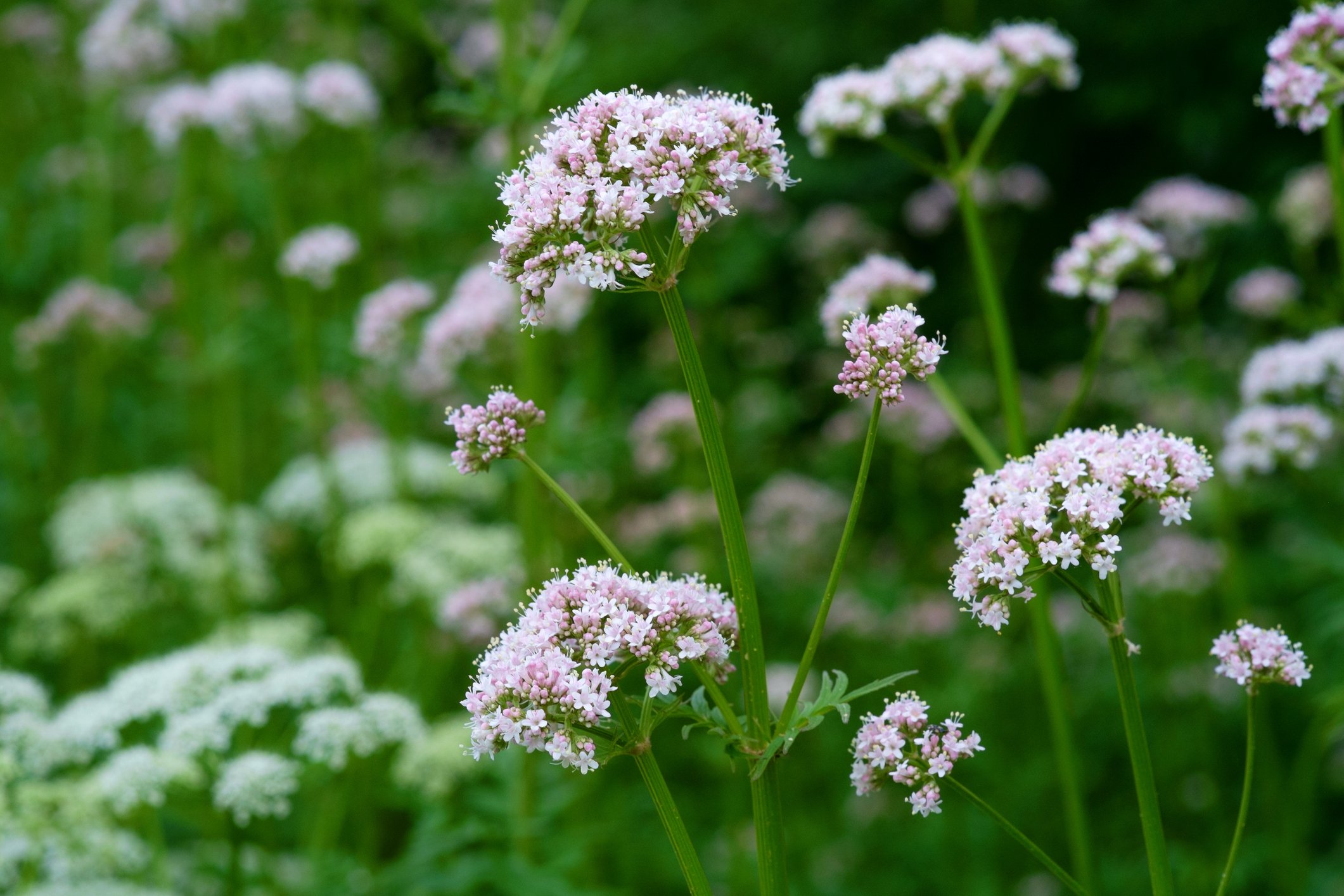
Sources
Bartram, T. (1998). Bartram’s Encyclopedia of Herbal Medicine. Constable.
Fisher, C. (2009). Materia Medica of Western Herbs (2018 edition). Finchley Road, London. Aeon Books.
Hedley, C, & Shaw, N. (2020). A herbal book of making and taking. Finchley Road, London. Aeon Books.
Hoffmann, D. (2003). Medical Herbalism: The Science and Practice of Herbal Medicine. Healing Arts Press.
McIntyre, A. (2019). The complete herbal tutor, revised and expanded edition. Finchley Road, London. Aeon Books.
Plants of the World Online | Kew Science. (n.d.). Plants of the World Online. https://powo.science.kew.org/
Disclaimer: This page is for educational purposes only. Consult a qualified medical herbalist before using herbs, especially during pregnancy, when trying to conceive, while breastfeeding, for medical conditions, or with children.
Read the full disclaimer → Medical Disclaimer.





